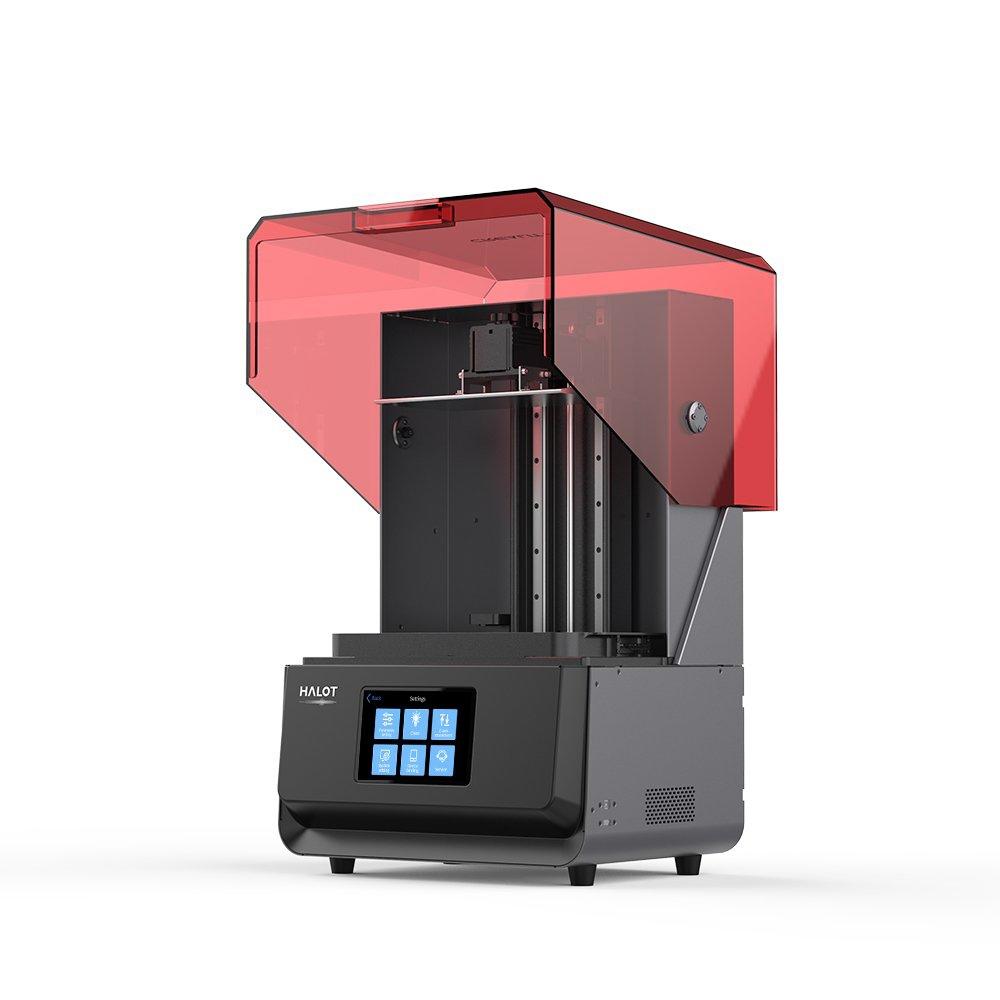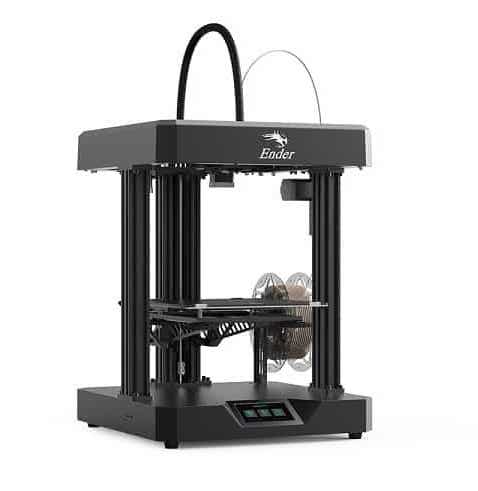Compare Halot Max vs Ender 7
Comparison between the best 3D printers
Choose the best 3D printer at the best price. The cheapest 3D printers are here.
Buy a 3D printer here with 3D Fila.
 |
 |
|
| Model | Halot Max[BUY Halot Max] |
Ender 7[BUY Ender 7] |
| Printing Material | Resin | Filament |
| Buy Resin for Creality 3D Halot Max | Buy Filament forCreality 3D Ender 7 | |
| Estimated price | $3000,00 | $429,00 |
| Manufacturer | Creality 3D | Creality 3D |
| Release Year | 2021 | 2021 |
| Print Volume [mm] | 293x165x300 | 250x250x300 |
| Printer Size [mm] | 480x387x770 | 430x460x570 |
| Weight [kg] | 32,5 | 17,2 |
| Power Loss Recovery | NO | YES |
| Maximum Resolution [mm] | 0,03 | 0,1 |
| Processor | Creality CR-FDM V.2.4.S1_V101 32bits | |
| Display | Display touchscreen 5'' | Display touchscreen 4,3'' |
| Power Supply | 110/220V / 350W | |
| Connectivity | SD / USB / Wi-Fi | SD / USB |
| Operating systems | Windows, Mac, Linux | Windows, Mac, Linux |
| Date of registration in the system | 2022-11-04 | 2022-11-04 |
| Release date | 2021 | 2021 |
| Extra features | The Halot Max printer stands out for its large print size (293 x 165 x 300 mm) and uses SLA technology. It has an integral light source for improved accuracy and a strong core with an advanced operating system. Its Z-axis module ensures high precision, supported by efficient slicing software. The machine offers online OTA updates and boasts an adjustable layer thickness between 10 and 200 microns. Its XY-axis resolution is 3840*2160, with 0.05 mm accuracy, and an integral 405nm light source. The printer includes a 5" touchscreen and multiple connectivity options, such as USB, Creality Cloud, and HALOT BOX WiFi. With cutting-edge technology, the Halot Max is ideal for printing small models with uniform precision, thanks to its self-developed lighting system and stable printing mechanism, which includes dual linear guides, ball screws, and an intelligent brake system. | Crealitys Ender 7 printer offers remarkable print speeds, utilizing CoreXY kinematics for precise and fast movement. With a 250x250x300mm build area, dual direct extruder, and custom hotend, the Ender 7 is capable of printing at high speeds, although quality may suffer on smaller prints. Assembly is relatively straightforward, but the machine is noisy and can get hot. Its true speed potential is most noticeable on larger prints, where it outperforms its competitors. |
| Support for multiple colors and materials (AMS and CFS) | NO | NO |
Notes * |
||
| Cost-benefit | 5 / 10 | 7 / 10 |
| Hardware | 1 / 10 | 2 / 10 |
| Tela | . | . |
| Print volume | 3 / 10 | 4 / 10 |
| Performance | 9 / 10 | 2 / 10 |
| [BUY Halot Max] | [BUY Ender 7] |
Conclusion |
| In conclusion, choosing between the Halot Max and the Ender 7 boils down to specific printing needs and budget preferences. The Halot Max excels in print quality, precision, and advanced features, making it ideal for users who prioritize intricate details and accuracy in their projects. Its SLA technology, large print volume, and robust build quality justify its higher price point, especially for those who require top-notch performance for small models and technical designs. On the other hand, the Ender 7 offers a cost-effective solution with impressive print speeds and a reasonable print volume, making it suitable for users looking for a reliable and efficient printer for larger projects at a fraction of the price. While it may compromise slightly on print quality for smaller items, its ease of assembly and robust dual extruder system cater well to enthusiasts and casual users alike. Ultimately, if budget is a primary concern and print speed takes precedence over absolute precision, the Ender 7 is a strong candidate. Conversely, for professionals or serious hobbyists willing to invest more for superior output quality and advanced functionalities, the Halot Max stands out as the better choice. |

